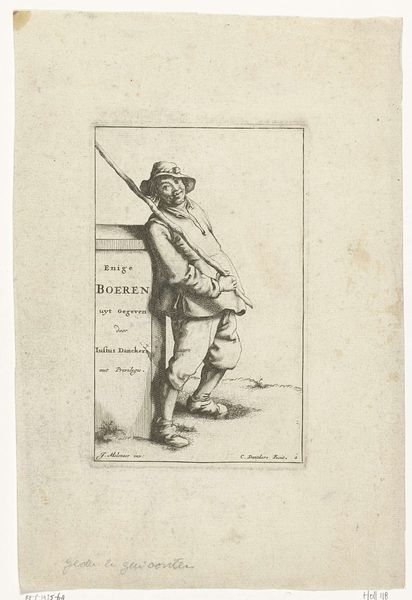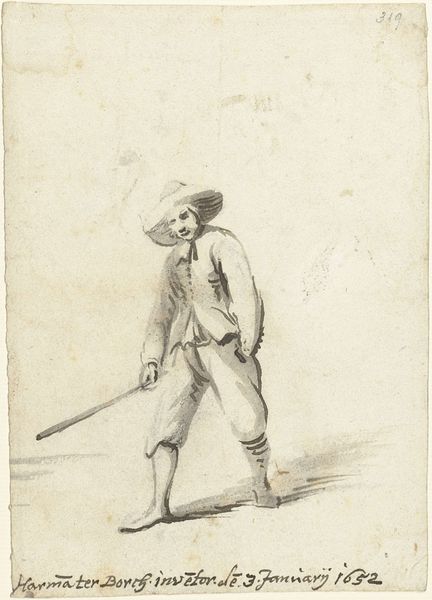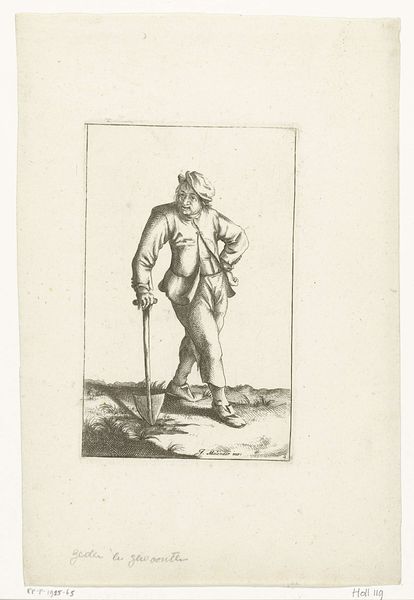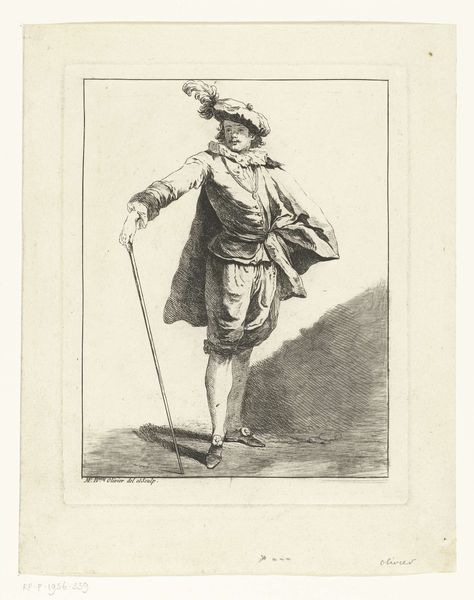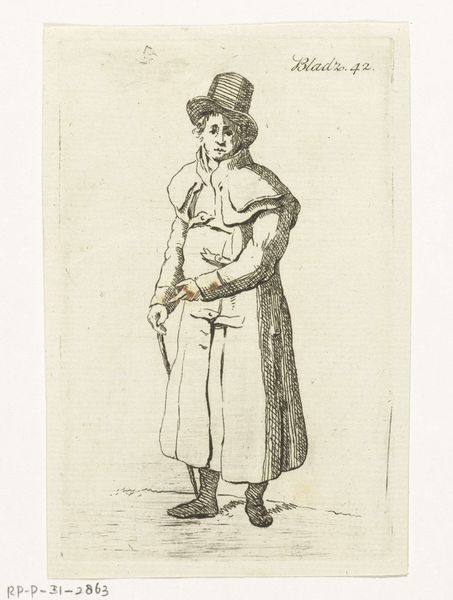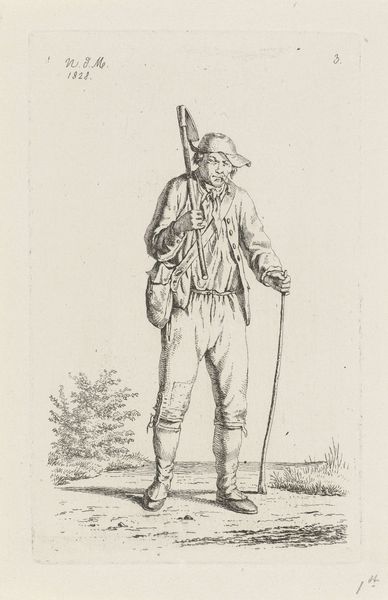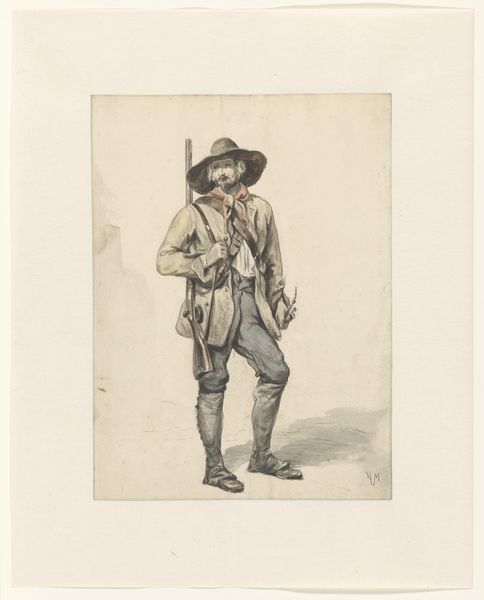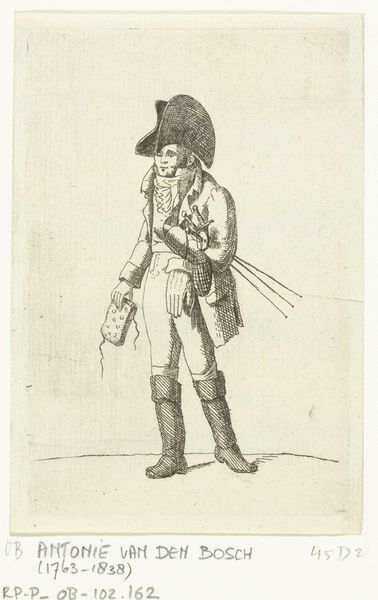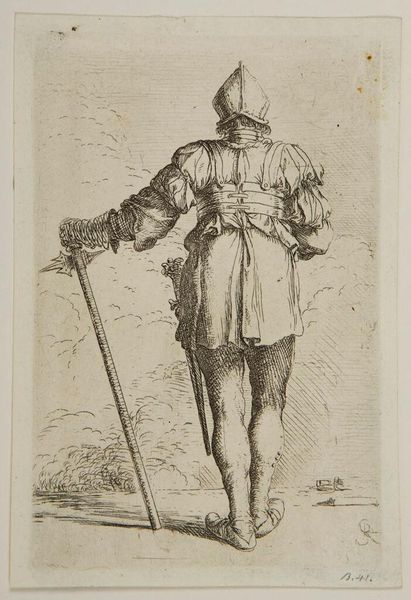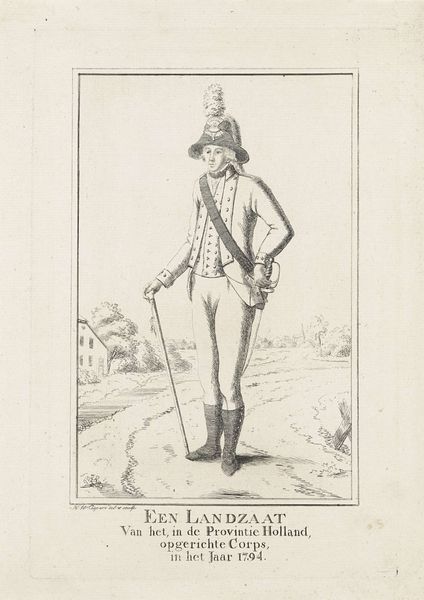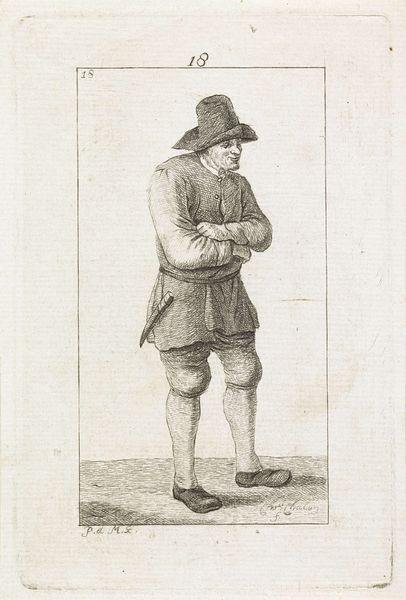
print, engraving
#
portrait
#
baroque
# print
#
genre-painting
#
engraving
Dimensions: height 145 mm, width 92 mm
Copyright: Rijks Museum: Open Domain
Editor: This is "Boer rookt pijp," or "Farmer Smoking a Pipe," an engraving by Cornelis Danckerts, created sometime between 1613 and 1656. The figure is simply drawn, but the lines create texture. I find it intriguing, because even in something seemingly so mundane, a class distinction is visible through clothing. What do you see in this piece? Curator: I notice, first and foremost, the *means* of production here. This isn't simply an image; it's an artifact of labor. The copperplate engraving process involved specialized tools and skills. Consider the cultural context, too. Tobacco wasn’t yet a universal commodity, so this small, unassuming piece indexes growing global trade and a shifting culture of consumption. Notice also the artist's craft–how he uses line to represent form, clothing. Are we meant to focus on *his* status through what the artisan renders on the plate, for the collector? Editor: That’s a really interesting point about the changing culture of consumption! So the material itself, the print, makes it accessible but it represents access to things like tobacco. Curator: Precisely! Who was meant to purchase this kind of print, and what would they do with it? Consider how the "genre painting" aspect—the farmer as subject—intersects with the burgeoning print market. Are we observing documentation, critique, or simply observation? It really makes you question the intended audience, the systems of distribution and value at play. The simple act of replication elevates and changes the cultural view. Editor: So we can interpret this print, not just as a representation, but also as a reflection of societal changes related to materials and their accessibility. Curator: Exactly! It encourages us to think critically about the material conditions of art and how those conditions shape our understanding of the subject matter. I now understand the class divide of the period and it also is reflective of wealth and access to tools of labor.
Comments
No comments
Be the first to comment and join the conversation on the ultimate creative platform.
